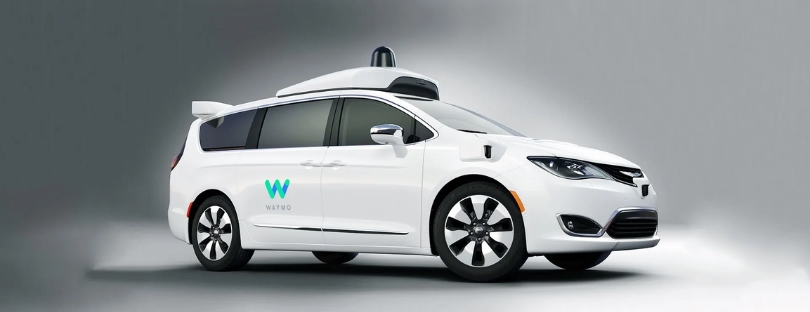
Waymo rolls out “Waymo for Business” — robotaxis enter the corporate travel playbook
Waymo is pushing deeper into managed mobility with its freshly launched Waymo for Business, a program that lets companies centrally manage employee robotaxi usage in cities like Los Angeles, Phoenix, San Francisco, Austin, and Atlanta.
In short: instead of treating self-driving taxis as just another consumer option, Waymo is now positioning itself as a corporate mobility vendor. Employers can set up accounts, manage who rides, track spend, create promo codes, and generate usage reports — the kinds of tools you’d expect from traditional managed travel platforms, now retrofitted for autonomous vehicles.
Here’s how I read the significance — and where things could go next.
Why this matters: robotaxis creeping into corporate travel
1. The boundary between ride-hail and managed travel blurs
Up to now, autonomous taxis have been a fringe choice for consumers or early adopters in a few geofenced zones. With this move, Waymo is essentially embedding robotaxis into the toolbox of corporate travel managers and mobility teams. That means robotaxi services could be bundled alongside shuttles, car rentals, ridepooling, and ground transfers — especially in cities where Waymo already operates.
2. Airport ground access becomes a strategic battleground
One of the key levers here is airport connectivity. Waymo already offers fully driverless, paid rides to and from Phoenix Sky Harbor—the first in the U.S. to do so. Waymo has also secured approval for San José Mineta International Airport operations and is testing at San Francisco International Airport. That matters because corporate travelers often start or end journeys via airports. If Waymo can reliably deliver rides between terminals, hotels, and local offices without drivers, the friction in last-mile ground access erodes.
3. Predictability, control, and safety become selling points
For companies, one of the annoyances in ride-hail programs is variability in cost, surge pricing, and messy reconciling of expenses. Waymo for Business seems designed to reduce those unknowns: a central admin, fixed pricing (no surge mention yet), and consolidated billing. Then there’s the safety narrative: Waymo leans heavily on its record, testing miles, sensor redundancy, etc., to argue that its autonomous stack is more dependable than a variable human driver.
4. It’s early — but this is a staging play
Waymo describes the program as still nascent, with more features yet to come. It’s reasonable to assume the rollout will be incremental: deeper integrations with travel management systems, advanced scheduling, hybrid use with human-driven legs, etc. Also, geographic expansion is likely, especially in regions where Waymo plans to scale or is already active.
Let me unpack how this stacks up against the competitive field.
Who else is in this race — and what’s different
Cruise / GM (restructured)
Cruise, once a top contender, has faced regulatory and safety hurdles, and GM recently restructured its investment in the robotaxi space. That pullback gives Waymo more breathing room, but also raises question marks about whether autonomous ride-hail business models can sustain the kind of growth and safety margins required.
Zoox (Amazon-backed)
Zoox just launched robotaxi service — starting with free rides in Las Vegas — and is eyeing San Francisco next. Zoox’s vehicle is custom-built (no steering wheel, bidirectional) rather than a retrofitted OEM model, which could appeal to certain use cases (e.g. shared ride configurations). But it doesn’t yet have the backend infrastructure or fleet scale that Waymo has amassed.
Tesla / Cybercab ambitions
Tesla’s strategy is more ambitious (and more speculative) — rolling out a robotaxi fleet leveraging its autonomous driving software and eventually the dedicated “Cybercab.” But Tesla is still navigating regulatory, perception, and technological risks. As of now, its robotaxi presence is minimal compared to Waymo.
Traditional TMC / ride-hail platforms (Uber, Lyft, etc.)
Uber and Lyft have long offered business travel and enterprise ride programs. But their vehicles are human-driven. The difference here is autonomous as the differentiator — though Waymo will need to prove reliability, scalability, and cost advantage before truly cutting into the incumbent TMC + ride-hail stack.
Compared to these, Waymo’s strengths center on its existing operational scale, regulatory head start in certain markets, and deep data from millions of autonomous miles logged. The risk, of course, lies in expansion costs, regulatory pushback, public perception after any mishaps, and matching the flexibility that human-driven alternatives still offer.
Conclusion: A turning point — if Waymo can execute
The launch of Waymo for Business represents more than a product update. It’s a strategic signal: Waymo believes autonomous mobility will not just live in consumer apps but inside managed travel stacks of enterprises. It’s an attempt to reframe robotaxis not as novelty add-ons but as serious, scalable components of corporate mobility portfolios.
Will it matter? The answer hinges on three dimensions:
- Reliability & coverage: For a corporate mobility team to take Waymo seriously, service coverage must be dense, consistent, and reliable in all hours and weather. Gaps will be felt immediately.
- Cost-justification: The capex and opex to scale, sensor/vehicle maintenance, regulatory compliance, and fallback contingencies (human backup?) must yield a business model cleaner than subsidized ride-hail models.
- Integration & flexibility: The program must plug seamlessly into existing TMC systems, expense platforms, scheduling engines, and hybrid fleets. It can’t remain siloed or optional.
Compared with incumbents like Uber/Lyft business programs, Waymo is entering late but with a disruptive twist. Compared with autonomous rivals (Zoox, Tesla, Cruise), Waymo’s advantage is in the scaffolding: mileage, regulatory agreements, fleet build-out, and network effects.
If Waymo pulls this off, corporate travelers in its operating cities may treat robotaxis as first-class options — not fringe experiments. And that shift could accelerate the adoption of autonomous mobility more broadly across travel, ground access, and even hospitality use cases. But until then, the real test won’t be the marketing launch — it will be months of uptime, market feedback, and whether planners trust that cars without drivers can actually reduce friction.










